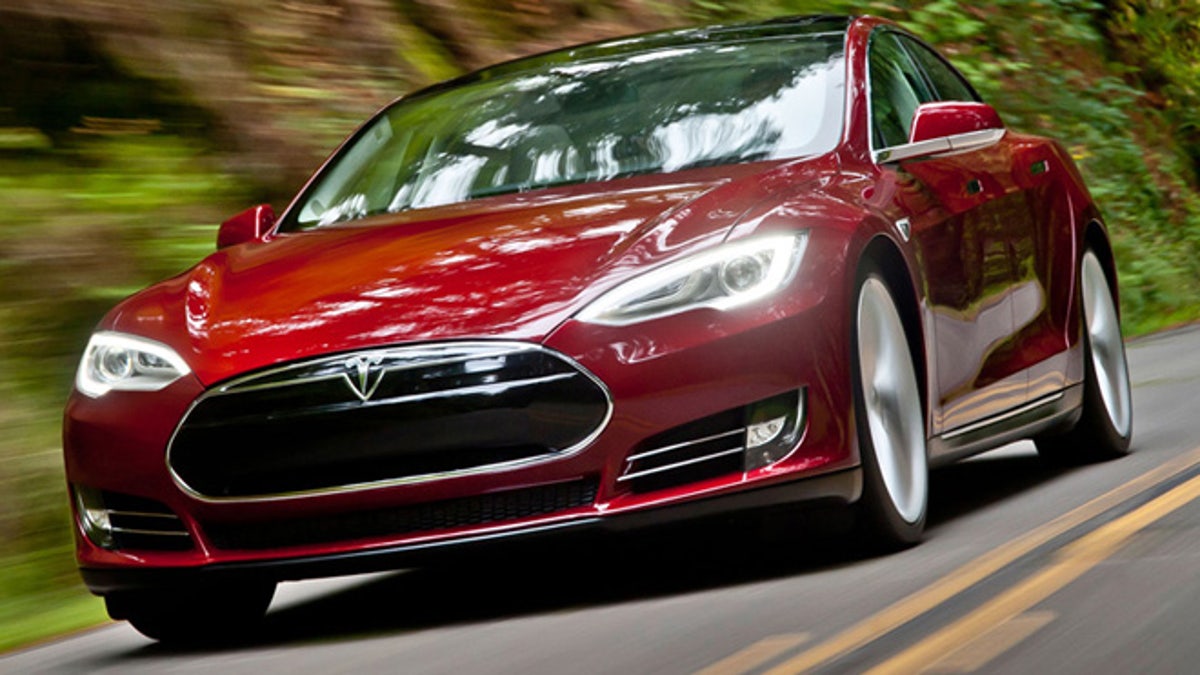
Tesla Model S (Tesla Motors)
“When the facts didn’t suit his opinion, he simply changed the facts.”
That’s the charge by Tesla Motors CEO Elon Musk against New York Times reporter John M. Broder, who wrote an unflattering story about his experience in the company’s latest electric car.
Musk claims the review was filled with so many inaccuracies that he’s called it “fake," and has released his own set of facts to back up the allegation in a blog posted on the Tesla Motors website under the title "A Most Peculiar Test Drive."
Broder issued a detailed response to Musk's claims on Thursday, denying the assertion that he set out to sabotage the test.
Broder’s initial review recounted a trip from Washington, D.C., to Connecticut in the $101,000 Model S, which has an EPA rated range of 265 miles per charge. Tesla has installed two sets of high-speed charging stations in Newark, Del., and Milford, Conn., a distance of 200 miles between them, to facilitate travel between Washington and Boston.
Quick Spin: 2013 Tesla Model S
Broder tried doing just that on a 30-degree day – typical this time of year for the Northeast – when low temperatures are known to affect the performance of the type of lithium-ion batteries used in the Model S.
Broder described in detail how the estimated range dropped faster than the miles being covered, forcing him at one point to set the cruise control at 54 mph and turn the climate control system to low to conserve energy. In a follow-up blog posted on Tuesday, after Musk originally raised questions about the article in a series of tweets, Broder says he drove more than 100 miles below 55 mph.
But a data log recorded by the car and released by Tesla tells a different story. In it, Musk says the car is shown to be traveling at an average of 60 mph during the time Broder claimed cruise control was set to 54 mph. It also indicates the cabin temperature was actually increased when Broder reported that he turned it down, then was lowered about 30 miles later.
Broder wrote that he reached the Milford charging station, but only after the car turned off the heater completely, and displayed a “recharge now” message, indicating the battery was nearly drained.
According to Musk, that’s when “instead of plugging in the car,” Broder “drove in circles for over half a mile in a tiny, 100-space parking lot. When the Model S valiantly refused to die, he eventually plugged it in.”
After charging the car there for “nearly an hour” -- which a graphic accompanying the article clarifies as 58 minutes -- Broder wrote the car showed 185 miles of range. He then continued to use the vehicle for the evening and parked it with 90 miles of charge left, 45 miles from the Milford charging station.
In another apparent discrepancy, Musk notes the log shows the car was plugged in for just 47 minutes, and would have left with a higher charge had it been plugged in for 58 minutes.
The following morning, with the temperature at 10 degrees when Broder got back in the car, he said the available charge had dropped to 25 miles. Despite his efforts to recapture the lost energy by warming up the battery, per Tesla’s instructions, he said he was unable to do so, and drove away from Milford to the nearest charging station in Norwich, Conn., which is not one of Tesla’s high-speed charging locations.
Broder said the company informed him at this point that “pumping in a little energy would help restore the power lost overnight.” After leaving the car plugged in for an hour, he said he was then told to continue to Milford.
But he didn’t make it. Even though he said he “limped along” at 45 mph, he said the car ran out of power short of the station.
A graphic accompanying the review said the car “fell short of its projected range and had to be taken to the Milford charging station on a flatbed truck.” Although it’s not clear if “projected range” is a reference to the 185 miles indicated at the end of the last charge in Milford, or when it was unplugged in Norwich, the graphic illustrated that the car said it had 32 miles of range when Broder left Norwich, and covered 51 miles of the 61-mile trip to Milford before it stopped.
Musk countered by noting “the car actually did an admirable job exceeding its projected range.” He also said the data showed Broder in fact did not limp along at 45 mph, as claimed, but at times drove faster. Broder also “drove right past a public charge station while the car repeatedly warned him that it was very low on range,” Musk said.
Musk makes several other points to support his case, even saying the Model S battery “never ran out of energy at any time, including when Broder called the flatbed truck.”
Musk also accuses Broder of having “outright disdain for electric cars,” based on a quote from a previous article where he wrote "the state of the electric car is dismal, the victim of hyped expectations, technological flops, high costs and a hostile political climate.”
“We were played for a fool and, as a result, let down the cause of electric vehicles. For that, I am deeply sorry,” Musk says.
A Times spokesperson tells FoxNews.com, “as we have said previously, our story was fair and accurate. We are in the process of reviewing the specific claims in Tesla's blog post and will respond to those when that review is complete."